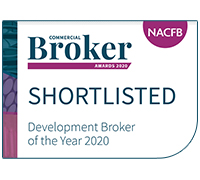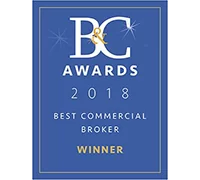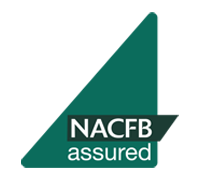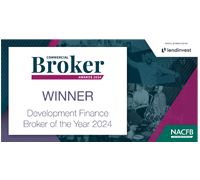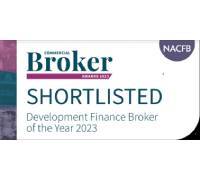Apply Online
Bridge To Let
Bridge to Let loans provide you with the opportunity to purchase a property where it would otherwise be impossible. Speak to one of our expert advisors today to find out whether a Bridge to Let mortgage is the right option for you.
What is Bridge to Let?
A Bridge to Let mortgage is a type of bridging loan that comes with a pre-approved Buy to Let mortgage. It’s designed to help investors buy a property they’d otherwise struggle to afford with a normal mortgage.
While standard bridging loans are ideal for developers who want to sell a property shortly after purchasing, Bridge to Let mortgages are designed specifically for landlords intending to keep the property to house tenants.
How does a Bridge to Let loan work?
With a Bridge to Let mortgage, the initial bridging loan is used to purchase — and in some cases develop — a property. It is then transferred to a Buy to Let agreement when the property is completed and tenanted.
The main difference between Bridge to Let loans and other modes of financing is that they:
- Have much faster turnaround times
- Include a pre-approved exit strategy
Fast turnaround
Unlike traditional mortgages, a Bridge to Let loan can be arranged within a couple of days. This makes them ideal for circumstances in which borrowers need short-term financial support to secure long-term gains
Pre-approved exit strategy
To secure a Bridge to Let loan, applicants must have in place an exit finance strategy. One of the main advantages of a Bridge to Let loan is that it comes with a pre-approved exit strategy: you’ll let the property out to paying tenants once it’s been purchased.
Because the exit strategy is included in the agreement, a successful Bridge to Let application enables you to move straight from a bridging loan to a Buy to Let mortgage with the same lender. This saves you the hassle of having to apply for a bridging loan and a Buy to Let mortgage with two separate lenders. It also means you’ll only complete on the bridging finance once the Buy to Let mortgage is approved.
How can I apply for a Bridge to Let loan?
To apply for a Bridge to Let loan, you’ll need to provide some information about yourself. Bridge to Let mortgage lenders assess different factors to normal mortgage applications, so they’ll ask you for a contrasting set of details. These may include:
- Address history and date of birth of individual borrowers
- Company name and number along with directors details and those of significant shareholders if the borrower is a company
- The full address of the property to be purchased
- Sales details and independent valuation (if available)
- Planning permission details (if applicable)
- Your plan for the property and exit strategy
- Whether you have any other assets to secure funding against
- Whether you’ll be able to refinance the property before the loan period ends
- Whether you’ve ever renovated a property before (if you’re stated plan is to refurbish)
When you speak to your broker, they’ll use the information you supply to find the ideal lender for you at the very best rates available.
What is a typical interest rate for a Bridge to Let loan?
Interest rates vary between lenders and by the length of the loan you require. They’re often higher than standard. In order to avoid hefty APRs, it’s crucial you get your Bridge to Let mortgage at the very best rates available.
Speak to a Positive Commercial Finance advisor to ensure you don’t pay more than you need to.
How much can you borrow on a Bridge to Let mortgage?
The amount you can borrow is determined by the rental income you’ll be able to generate from the property.
This is subject to the lender’s maximum Loan to Value cap. For example, if a lender with an 80% LTV agrees to bridge a £100,000 property, they’ll cap lending at £80,000. In this scenario, the borrower would need to pay the remaining amount as a deposit.
There are a few factors that can affect your LTV:
- The condition of the property — If the property is in poor condition, lenders may lower their LTV cap for your application
- The term of the loan — Longer-term loans can lead to lower LTVs than short-term ones.
What are the fees for Bridge to Let?
As well as your agreed interest rate, lenders will charge additional fees to cover the administrative costs associated with securing your loan. This can include:
- The valuation of the property
- A facility fee
- An exit fee
- Any legal costs
Fees are based on the loan value. Facility fees and exit fees, for example, might be between 1-2% of the Bridge to Let mortgage value.
Can you still get a Bridge to Let loan with bad credit?
While having adverse credit will limit your options, there are lenders who specialise in catering for borrowers that need extra help with their applications. With the right lender, you might still be able to secure a loan even with a low credit score, mortgage arrears or defaults.
If you do have adverse credit, it’s imperative that you find the right lender so that your application isn’t rejected. Speak to a friendly advisor today to learn about your options.
Criteria Overview
- Cheapest rates guaranteed
- UP TO 75% LTV
- TERMS FROM 1 MONTH TO 2 YEARS
- ADVERSE CREDIT CONSIDERED
- LOANS FROM £30K TO £100M
- 1ST 2ND & 3RD CHARGES

Auction calculator
Other Bridging Product Types
Frequently Asked Questions
- What kind of properties can be purchased?
- Do you need a valuation report?
- Is Auction Finance Quick?
- Who can borrow using auction finance?
- What is an auction?
- Can I just turn up and buy a property?
- How much can I borrow?
- What can the auction finance loan be used for?
- How long can I have my auction finance bridging loan for?
- How much interest will I pay on my bridging auction finance?
- Do I need a valuation?
- Do I need a solicitor?
- What is a legal pack, and where do I get it from?
- When will I have to pay for the property?
- What about insurance?
- Can Property Auction Finance be used to purchase other Assets?
- Can I use auction finance to buy a house?
Quick Enquiry

